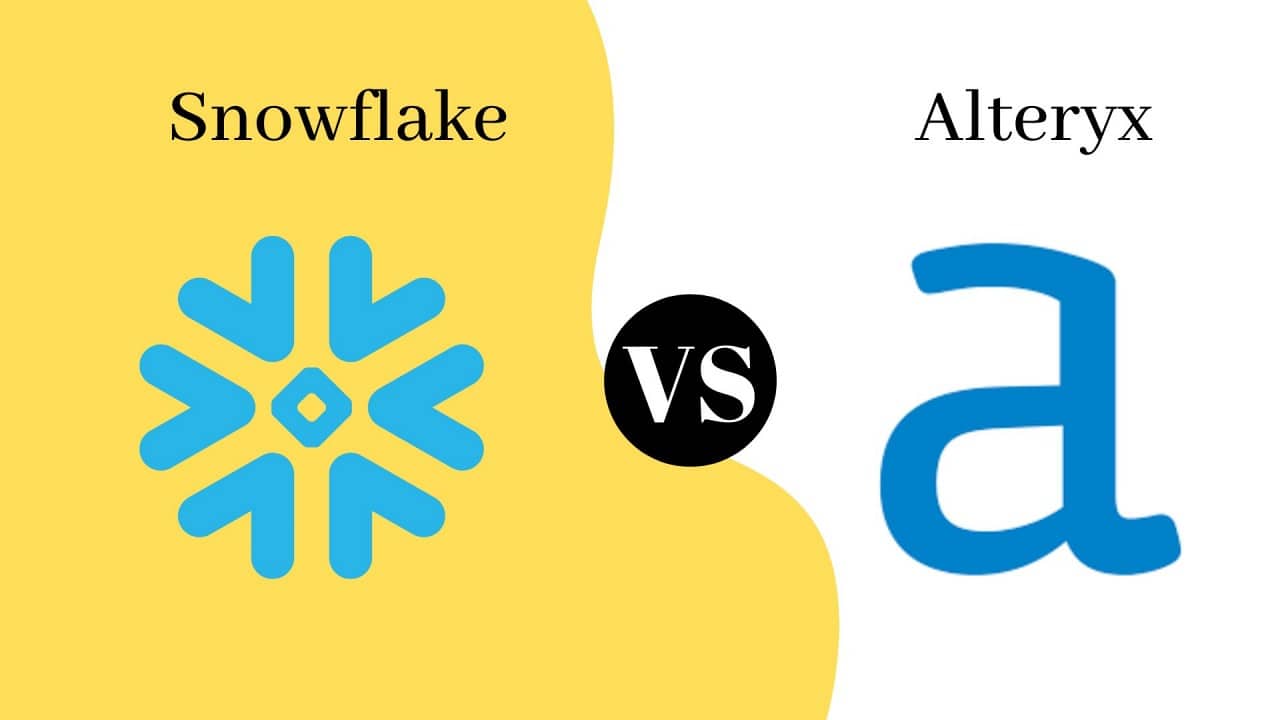What is Snowflake?
Snowflake is a cloud-based data warehousing platform that has been gaining popularity in recent years. It was founded in 2012 by Benoit Dageville, Thierry Cruanes and Marcin Zukowski with the mission of reinventing the way organizations store, analyze and share data. Snowflake's unique architecture separates compute from storage which allows for near-infinite scalability and better performance compared to traditional on-premise solutions.
One of Snowflake's key selling points is its ability to handle large volumes of structured and semi-structured data while maintaining fast query speeds. With Snowflake, organizations can store data of all types including CSV files, JSON documents, Avro files and more. Additionally, it supports a variety of integrations with popular data tools such as Tableau, PowerBI and Python. Become a Snowflake Certified professional by learning this Snowflake Training!
What is Alteryx?
Alteryx is a data analytics platform that helps businesses to make informed decisions based on their data. It combines the capabilities of data preparation, blending, and analytics into a single platform. The software is designed for non-technical users such as analysts, marketers, and business leaders who need to quickly analyze large amounts of data.
One of the key features of Alteryx is its ability to automate repetitive tasks in the data analysis process. This includes data cleansing, formatting and joining multiple datasets together. This frees up time for analysts to focus on more complex tasks such as predictive modelling or machine learning algorithms.
Another advantage of using Alteryx is its intuitive user interface which makes it easy for non-technical users to navigate through complex datasets. Users can drag-and-drop tools from an extensive library to customize workflows that suit their specific needs.
What is the Difference Between Snowflake and Alteryx?
Snowflake and Alteryx are both data management platforms, but they serve different purposes and have additional features. Here are some key differences between the two:
- Purpose: Snowflake is a cloud-based data warehousing platform that enables organizations to store, manage, and analyze large amounts of data. Alteryx, on the other hand, is a self-service data analytics platform that allows business users to prepare, blend, and analyze data without needing extensive technical expertise.
- Data Integration: Snowflake offers data integration capabilities, but it primarily focuses on storing and managing data. Alteryx, on the other hand, is designed to integrate data from various sources, including databases, spreadsheets, and cloud applications.
- Workflow Automation: Alteryx offers a wide range of workflow automation features, which allow users to create complex data integration and analysis workflows without needing to write code. Snowflake, on the other hand, is designed primarily for data storage and management, so it doesn't offer the same level of workflow automation capabilities as Alteryx.
- User Interface: Alteryx has a user-friendly interface that is designed for non-technical users, while Snowflake has a more technical interface that requires some level of technical expertise to use effectively.
- Pricing: Snowflake offers a consumption-based pricing model, which means that users pay based on the amount of data they store and process. Alteryx, on the other hand, offers a per-user subscription pricing model, which means that users pay based on the number of users who need to access the platform. Interested in learning Alteryx? Join HKR and Learn more about Alteryx Tool from the Alteryx Training!
Key Features of Snowflake and Alteryx
Here are some key features of Snowflake and Alteryx:
Features of Snowflake:
- Cloud-based Data Warehousing: Snowflake is a cloud-based data warehousing platform that allows organizations to store and manage large amounts of data in the cloud.
- Scalability: Snowflake is designed to be highly scalable, so organizations can easily add or remove resources as needed to accommodate changes in their data needs.
- Security: Snowflake provides a range of security features, including multi-factor authentication, encryption, and data governance tools, to help organizations keep their data secure.
- Data Sharing: Snowflake makes it easy for organizations to share data with partners, customers, and other stakeholders, while still maintaining control over who has access to the data.
- SQL Support: Snowflake supports standard SQL queries, so organizations can use their existing SQL skills to work with data in the platform.
Features of Alteryx:
- Data Integration: Alteryx allows users to integrate data from various sources, including databases, spreadsheets, and cloud applications.
- Self-service Analytics: Alteryx is designed to be a self-service platform, which means that business users can prepare, blend, and analyze data without needing extensive technical expertise.
- Workflow Automation: Alteryx offers a range of workflow automation features, including the ability to schedule and run workflows automatically, which can help users save time and reduce errors.
- Data Visualization: Alteryx includes built-in data visualization tools, which allow users to create interactive charts, graphs, and dashboards to help them better understand their data.
- Machine Learning: Alteryx includes a range of machine learning tools, which allow users to build and deploy predictive models without needing to write code.
In conclusion, Snowflake and Alteryx are both powerful data analytics solutions that offer their own unique advantages. Snowflake is a cloud-based platform that is simple to use and provides many features for scaling, security and extensibility.
Alteryx is a comprehensive platform for data analysis and workflow automation with an extensive library of connectors to other applications. Depending on the specific needs of the organization, either solution may be the ideal choice.













0 Comments: